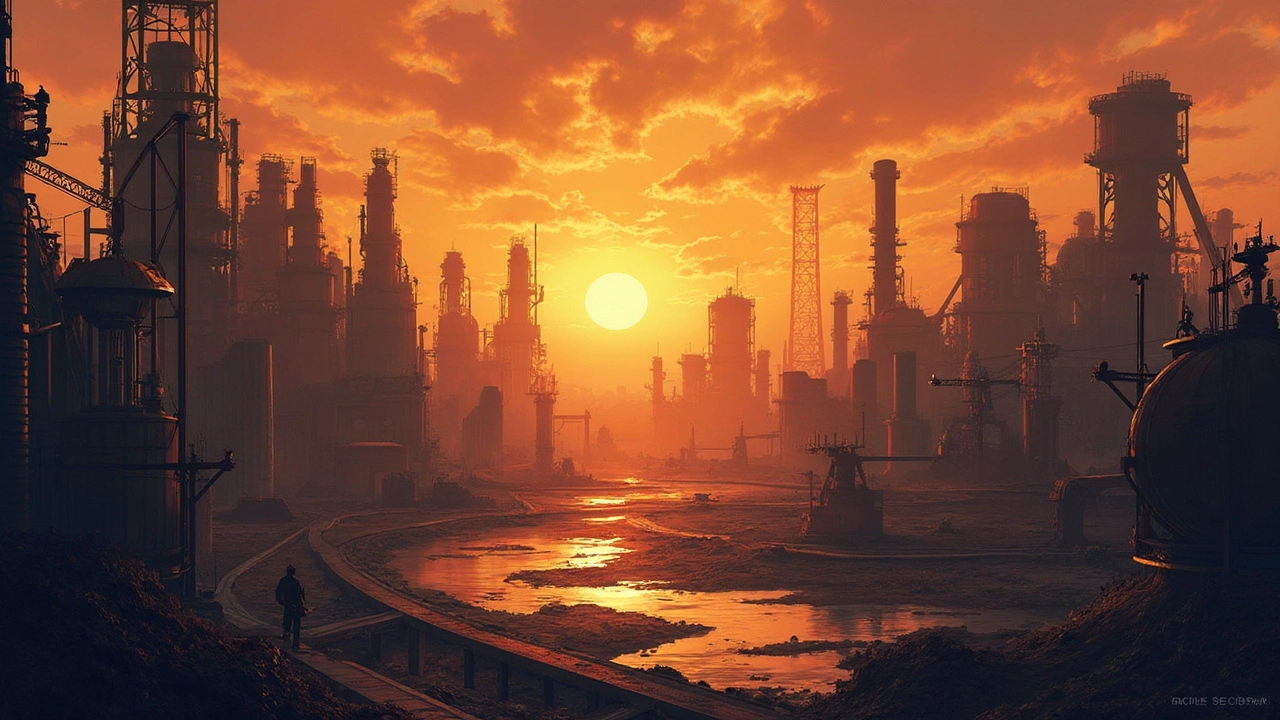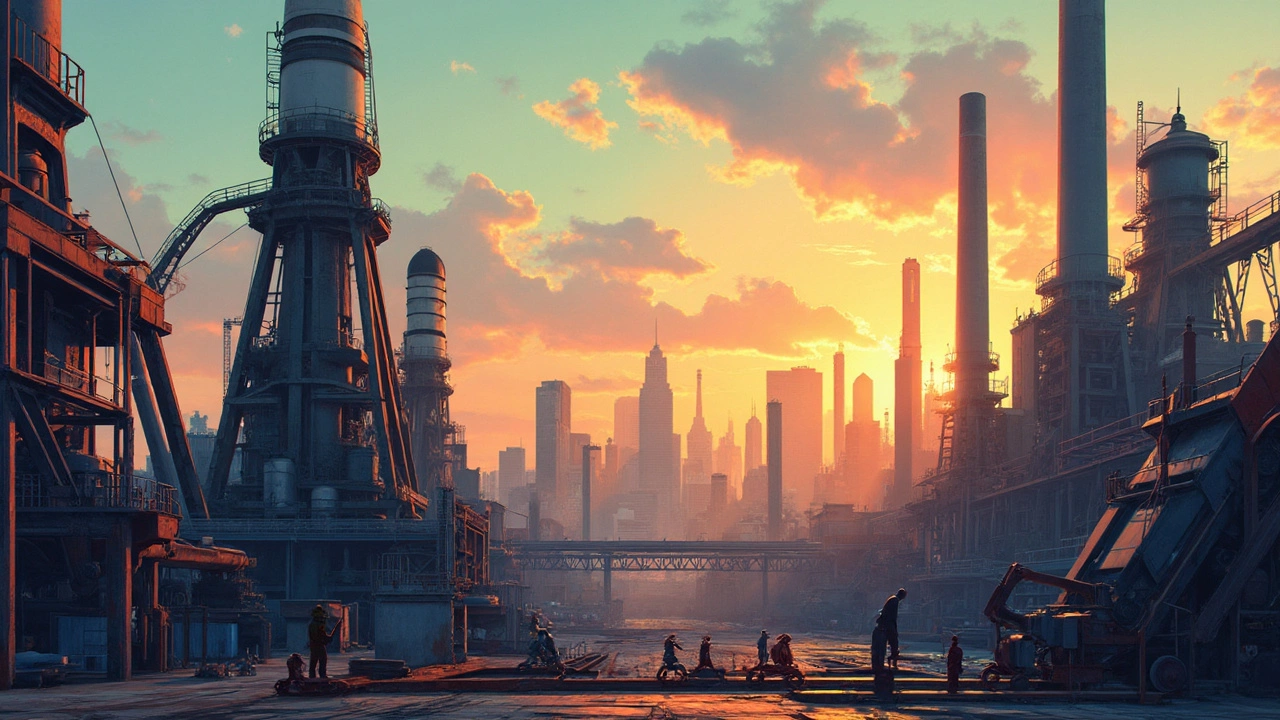Ever found yourself wondering just how many steel plants are still operating in the good ol' US of A? You're not alone. The landscape of American steel has undergone quite the transformation over the years. Gone are the days when steel plants dominated the industrial scene. But hey, that doesn't mean they're gone entirely.
Today, there are about 90 steel plants kicking around in the United States. To some, that number might seem low. But for the industry insiders, it reflects more of an evolution than a decline. These plants aren't just rusting relics of the past; they're adapting and embracing new tech to stay competitive. With automation and digital advancements, the steel industry is far from becoming obsolete. It's reshaping itself, kind of like when you decide to reinvent your wardrobe.
Sure, the steel plants in Pittsburgh are no longer the towering giants they once were. But don't count them out just yet. There are plenty of success stories of smaller plants thriving and specializing in niche markets. And here's a tip: if you're in the mood for a deep dive into steel plant survival strategies, pay attention to how they manage to reduce emissions while boosting efficiency. That's where the magic happens.
- The Decline of Steel Plants in the US
- Current Steel Plant Landscape
- Economic and Technological Shifts
- Future Prospects and Staying Informed
The Decline of Steel Plants in the US
Back in the day, the US steel industry was like that favorite uncle who seemed to hold everything together at family gatherings. It wasn't just a part of the country's financial backbone; it was a cultural icon. But times changed, and the decline of steel plants became a harsh reality.
The 1970s and 1980s were particularly rough. With globalization ramping up, international competitors started rolling in, and they weren’t just knocking on the door—they were breaking it down with cheaper prices. Countries like China and South Korea began flooding the market, making it difficult for American steel plants to keep pace.
On top of that, we had a change in industrial practices, with other countries embracing modern steel production technologies faster. Many US plants were slow to adapt, still hanging on to older equipment that wasn’t efficient enough to compete with the shiny new tech abroad. Technology became a game-changer, and sadly, many plants just didn't make the cut.
Environmental regulations also played a role. As the country became more conscious about the ecological impact of industries, stricter rules meant plants had to spend big bucks on green technology or face closure. Some were just not able to shoulder these costs.
Then, as if things weren't already tricky, we had shifts in demand. Sure, skyscrapers and bridges still needed steel, but the demand for heavy steel products plummeted. Instead, there was more desire for lighter and stronger steel variations, pushing many traditional plants out of the race.
| Year | Number of Steel Plants |
|---|---|
| 1950 | 187 |
| 2000 | 110 |
| 2025 | 90 |
This decline taught everyone a thing or two about adaptability. While many plants closed, the survivors learned they had to innovate or get left behind. It became clear that those who could blend modern tech with sustainable practices would keep the torch burning in the American steel narrative.
Current Steel Plant Landscape
Let's talk about what's happening with the steel plants across the United States right now. First off, there are roughly 90 active steel plants scattered throughout the country. The big players are still around, like U.S. Steel and Nucor, dominating much of the scene. But it's not just about the big names; there are also smaller, more specialized operations making waves.
In places like Indiana and Pennsylvania, the resurgence of steel manufacturing is part of a broader move to bring back domestic production. You might be surprised to learn that Indiana is the largest steel-producing state. Gary, Indiana, alone cranks out a significant portion of America's steel, thanks to plants like the Gary Works facility.
Then there are the newcomers. These up-and-coming plants are investing heavily in technology, automation, and sustainability to stay competitive. The focus on reducing environmental impacts has gotten stronger, with many facilities working hard to cut down emissions and energy consumption. Some plants have adopted electric arc furnaces, which are more energy-efficient and produce less waste.
For those who love numbers, here's a quick look:
| State | Number of Steel Plants | Major Companies |
|---|---|---|
| Indiana | 23 | U.S. Steel, ArcelorMittal |
| Pennsylvania | 15 | Nucor, U.S. Steel |
| Ohio | 14 | AK Steel, Nucor |
It's not all smooth sailing, though. The industry faces challenges from fluctuating demand, international competition, and shifts in policy. However, by focusing on innovation and sustainability, many US steel plants are finding new ways to stay relevant and thrive.

Economic and Technological Shifts
The US steel industry has rolled through some major economic and tech waves recently. It's like everyone’s on a mission to either sink or swim. Let's talk about how these shifts are changing things up.
First off, we’ve got the economic side of things. Global competition's been fierce. Countries like China have been producing steel at a breakneck pace, and for cheaper, too. That means American steel plants have to really up their game to stay relevant. Many of them have been downsizing or merging to cut costs. It's like a survival game but with way more stakes.
Now, onto the tech scene. Automation and digitalization are no longer just buzzwords; they're the backbone of the thriving plants. Modern steel plants in the US are leveraging automation to enhance precision and increase production without breaking the bank. This tech-heavy approach means fewer jobs on the floor but more specialized roles in tech and management. Check it out, we’ve even got robots handling the super-hot molten steel! It's all about using tech to do the dirty work so humans can stay safe.
One of the hot topics right now is the push towards greener steel production. Plants are now aiming to cut emissions and reduce energy usage. Some are dipping their toes in renewable energy sources like wind or solar, and others are perfecting their recycling methods. It’s not just trendy; it’s essential with all these regulatory pressures.
| Year | US Steel Production (Million Metric Tons) | % from Recycled Material |
|---|---|---|
| 2022 | 81.1 | 69% |
| 2023 | 84.3 | 71% |
| 2024 | 87.7 | 73% |
So, what's next? Plants that embrace cutting-edge tech and sustainable practices are likely to thrive. It’s like embracing new music genres; adapt or get left behind. If you want to keep your finger on the pulse of how American steel plants are adapting, watching how they integrate new technologies and green strategies is a solid place to start.
Future Prospects and Staying Informed
Looking ahead, the future of steel plants in the US might seem uncertain to some, but there are exciting changes on the horizon. The push for greener practices is no longer just a trend—it's a necessity. Many US manufacturing facilities are making strides in reducing their carbon footprint while boosting efficiency. Think of it like switching to an energy-saving light bulb but on a massive industrial scale.
New projects are popping up, driven by the increased demand for durable materials in infrastructure and renewable energy sectors. The Biden administration recently announced ambitious plans to upgrade American infrastructure, which spells opportunities for the steel industry. With policies encouraging local production and green tech, US steel plants are poised to catch this wave.
But how do you keep up with these fast-paced changes? Here’s the inside scoop: staying informed is key, and it doesn’t mean you have to be glued to industry journals. Here’s a little roadmap:
- Set news alerts for key terms like “US steel production” or “American steel industry.” You'll get the latest updates without digging through heaps of info.
- Follow prominent industry leaders and companies on social media. You’ll often find real-time insights and announcements there.
- Join online forums or groups focused on industrial manufacturing. It's like having a direct line to folks who eat, breathe, and live steel.
- Attend webinars or industry conferences virtually. It’s a great way to hear from experts without booking a flight or fancy hotel.
These changes might seem like baby steps, but they’re reshaping the landscape. If US steel plants embrace innovation and keep an eye on greener practices, they're set not just to survive, but thrive. So, whether you're a steel enthusiast or someone who stumbled upon this world by chance, keeping these factors in mind will help you navigate future developments like a pro.
